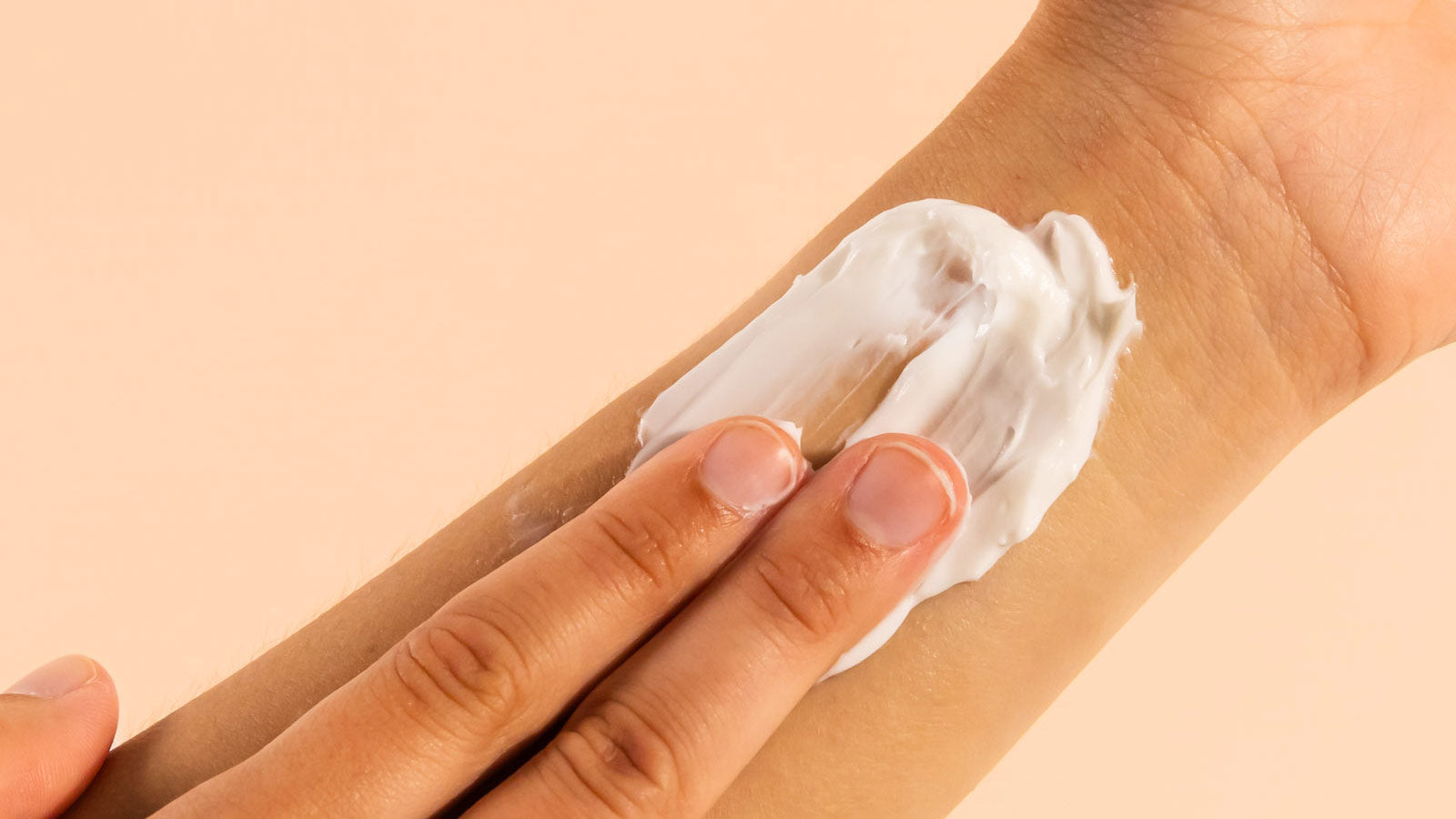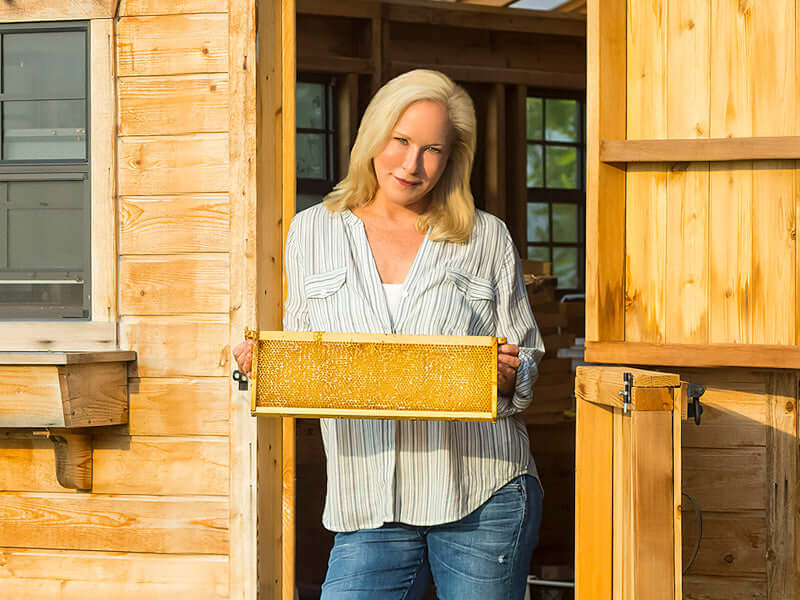If you've ever had an unwanted reaction from a "gentle" cleanser, experienced irritation from "hypoallergenic" lotion, or found that a product everyone loves just doesn't agree with your skin, you understand why patch testing is so important.

For those of us with sensitive or reactive skin, patch testing can help identify products that feel comfortable on our skin before committing to full use. Yet most people skip this crucial step, drawn in by beautiful packaging and glowing reviews, only to learn the hard way that one person's miracle is another's nightmare.
What Is Patch Testing and Why Does It Matter?
Patch testing is the process of applying a small amount of new skincare product to a limited area of skin before using it on your face or entire body. Think of it as a preview - a way to see how your skin will react without committing to full application.
The stakes matter. Skin sensitivity affects many people, and reactions can range from mild discomfort to significant irritation that takes time to resolve. For people with sensitive skin conditions, the likelihood of reactions may be even higher.
When you skip patch testing, you're essentially gambling with your skin's health. That expensive face serum? It could trigger a reaction that leaves you looking and feeling worse than you started. That luxurious body cream? One application could result in itchy, inflamed skin across your entire body.

The Science Behind Skin Reactions
Understanding why patch testing works requires understanding how skin reactions develop. When your skin encounters a potential irritant, it may respond with visible or felt changes. This recognition doesn't always happen immediately - sometimes it takes multiple exposures for sensitivity to develop.
Contact sensitivity comes in two forms:
- Irritant contact sensitivity may develop when harsh ingredients or frequent exposure to mild irritants affect your skin's comfort. This is why your hands might become red and dry from repeated hand washing, or why certain soaps leave your skin feeling tight and uncomfortable.
- Allergic contact sensitivity occurs when your skin develops a specific sensitivity to an ingredient. This can happen with with "natural" ingredients. Common skincare ingredients that some people find sensitizing include fragrances, preservatives, certain essential oils, and even some botanical extracts.
The tricky part? You might use a product successfully for months before developing a sensitivity. You skin's tolerance can change due to hormones, stress, seasonal changes, or simply repeated exposure to an ingredient.

Learn all about living seasonally
How to Patch Test: The Step-by-Step Method
Step 1: Choose Your Testing Location
Select an area that's similar to where you'll use the product but easily covered if a reaction occurs. Good patch testing spots include:
- Inner forearm (most common choice)
- Behind the ear (good for face products)
- Inner wrist (sensitive area, good for detecting reactions)
- Inner elbow (traditional spot dermatologists use)
Avoid areas that are frequently washed, sweaty, or covered by tight clothing, as these factors can interfere with results.
Step 2: Prepare Your Skin
Make sure the testing area is clean and completely dry. Avoid applying the test to broken, irritated, or recently shaved skin. If you've used other products in the area recently, wait at least 24 hours to ensure any residue is gone.
Step 3: Apply the Product
- Use a small amount - about the size of a pinhead
- Apply it just as you would normally (don't rub harder or use more than usual)
- For product you dilute or mix, test them in their final form
- If testing multiple products, space them at least two inches apart and label the areas.
Step 4: Wait and Observe
24 hours minimum, 48-72 hours preferred. Check the area periodically for:
- Redness or irritation
- Itching or burning sensations
- Swelling or raised bumps
- Dry, flaky, or peeling skin
- Any discomfort or unusual sensations
Important: If you experience significant discomfort, burning, or rapidly spreading irritation, remove the product immediately and wash the area thoroughly.
Step 5: Evaluate Results
- No reaction: Generally safe to proceed, but start with limited use
- Mild reaction: Consider whether this is acceptable or if you should avoid the product
- Moderate to severe reaction: Do not use this product

Test out our new Nectar + Honey Body Scrub
Advanced Patch Testing Strategies
Testing Multiple Products Safely
When you're excited about several new products, resist the urge to test them all at once. Introduce one new product at a time, waiting at least a week between additions. This way, if you develop a reaction, you'll know exactly which product caused it.
For comprehensive routine overhauls, consider this timeline:
- Week 1: Patch test and introduce new cleanser
- Week 2: Add new moisturizer (after patch testing)
- Week 3: Introduce new treatment product
- Week 4: Add any additional products
Seasonal Considerations
Your skin's sensitivity can vary with the seasons. Products that work beautifully in summer might irritate winter-dry skin, while rich formulas perfect for cold weather could feel to heavy in humidity. Consider retesting products when seasons change, especially if you have sensitive skin.
Special Considerations for Different Product Types
Body butters and rich moisturizers should be tested on your inner arm since they're typically used on your body. These products often contain higher concentrations of oils and butters, which some people find sensitizing.
Essential oil-based products require extra caution, as essential oils are potent and can cause reactions even in small amounts. Always patch test products containing essential oils, even if you've used other essential oil products successfully.
Exfoliating products like bath soaks can be tested by adding a small amount to a basin of water and soaking just your hand or food for the recommended time.

Our honey body scrubs are made to hydrate while they exfoliate
Reading Your Skin's Signals
Learning to interpret your skin's reactions takes practice. Here's how to decode what you're seeing:
Normal Responses (Usually Safe to Proceed)
- Slight tingling that disappears within minutes
- Temporary warmth or cooling sensations (from ingredients like menthol)
- Very mild, brief redness that fades quickly
Warning Signs (Proceed with Caution)
- Persistent mild redness after 24 hours
- Slight dryness or tightness
- Minimal itching that doesn't worsen
Red Flags (Stop Using Immediately)
- Intense itching or burning
- Spreading redness or inflammation
- Bumps, blisters, or hives
- Swelling or pain
- Skin that feels hot to the touch
What to Do When Patch Tests Go Wrong
If you develop a reaction during patch testing:
- Remove the product immediately using lukewarm water and a gentle cleanser
- Avoid rubbing or scrubbing the affected area
- Apply a cool, damp cloth to provide comfort
- Consider speaking with a healthcare professional if there's significant discomfort or if the reaction spreads
- Monitor the reaction and seek professional guidance if it spreads or worsens
- Document the reaction so you can identify problematic ingredients

Do you know about honey skincare?
Building Your Personal "Safe" List
Successful patch testing isn't just about avoiding reactions - it's about building confidence in products that work for your unique skin. Keep a record of:
- Products that pass patch testing with flying colors
- Ingredients that consistently work well for you
- Formulation types your skin prefers (oil-based vs. water based, thick vs. light)
- Brands that tend to work for your skin type
This information becomes invaluable when shopping for new products. When you find a brand that consistently creates products your skin loves, you can feel more confident exploring their range.
Creating a Patch Testing Routine
Making patch testing a habit rather than an afterthought increases your chances of actually doing it. Here's how to build it into your routine:
- Sunday prep: Patch test new products for the coming week
- Shopping strategy: Buy only one or two new products at a time
- Tracking method: Use your phone or a simple notebook to record results
- Seasonal checks: Retest favorite products when seasons change dramatically
The Economics of Patch Testing
While patch testing might seem like it slows down your skincare journey, it actually saves money in the long run. Consider the true cost of skipping this step:
- Wasted money on products you can't use
- Additional products needed to calm reactive skin
- Potential dermatologist visits for severe reactions
- Time lost dealing with inflamed skin
- Emotional stress from skin problems
When you patch test consistently, you build a collection of products you can rely on, reducing waste and increasing satisfaction with your skincare routine.

When Patch Testing Isn't Enough
Sometimes, even careful patch testing doesn't prevent reactions. Your skin might tolerate a product in small amounts but react when used over larger areas or for extended periods. This is why it's important to:
- Start with limited use even after successful patch testing
- Pay attention to cumulative effects over time
- Be willing to discontinue products if delayed reactions develop
- Understand that sensitivity can develop over time
Professional Patch Testing vs. At-Home Testing
Skin care professionals can perform comprehensive patch testing for common sensitizing ingredients, which involves applying standardized materials to your back and monitoring reactions over several days. This professional testing can help identify specific ingredients you may want to avoid and is particularly valuable if you have frequent, unexplained skin reactions.
At-home patch testing, while less comprehensive, is practical for evaluating specific products you want to use. Both approaches have value, and they complement each other well.

The Confidence That Comes with Smart Testing
When you make patch testing a regular part of your skincare routine, you gain something invaluable: confidence. You can try new products without fear, knowing you're taking reasonable precautions. You can invest in quality skincare knowing you're likely to be able to use it. Most importantly, you can enjoy the process of caring for your skin instead of constantly worrying about the next reaction.
Real-World Application: Building Your Ideal Routine
Let's say you're building a new body care routine and want to incorporate richer, more nourishing products. You might start by patch testing a gentle honey-based body butter, known for its naturally moisturizing and soothing properties. After successful patch testing, you could gradually introduce complementary products like matching body scrub for weekly exfoliation or a soothing bath soak for ultimate relaxation.
The key is patience and methodical testing. Each successful addition to your routine builds on the last, creating a comprehensive self-care regimen you can trust.
Your skin is unique, with its own preferences, sensitivities, and needs. Patch testing honors that uniqueness, helping you discover what works specifically for you rather than relying on what works for others. In a world full of skincare trends and must-have products, patch testing keeps you grounded in what actually serves your skin.
Remember: taking the time to patch test isn't about being overly cautious - it's about being smart. Your future self, with healthy, happy skin, will thank you for the patience and care you show today.
Always consult with a skin care professional if you experience persistent skin reactions or have concerns about product safety. This information is for educational purposes and should not replace professional guidance. Individual results may vary.












